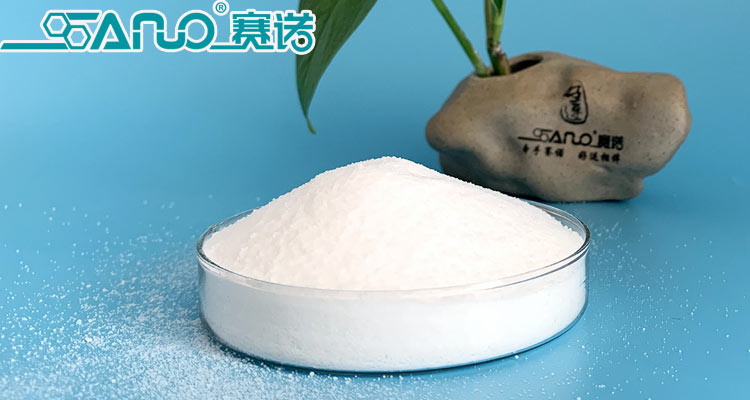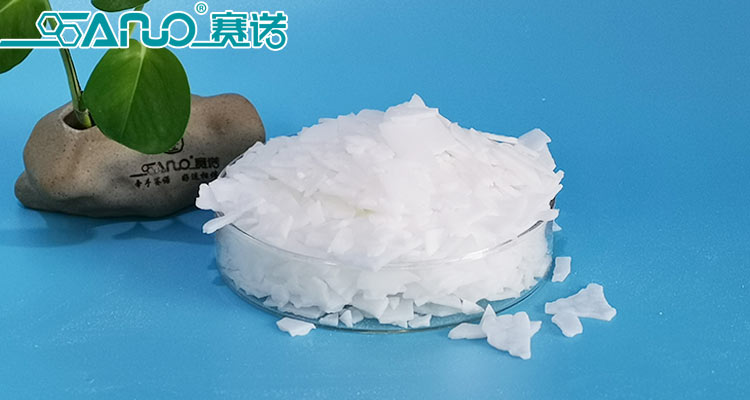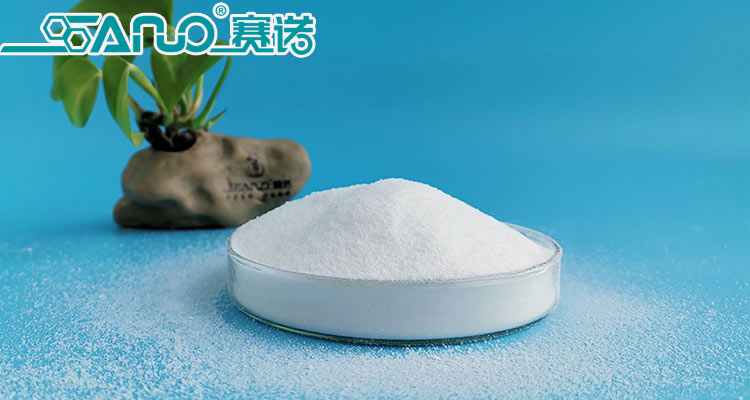In the process of polyethylene production, a small amount of oligomer will be produced, that is, low molecular weight polyethylene, also known as polymer wax, or polyethylene wax for short. It is widely used because of its excellent cold resistance, heat resistance, chemical resistance and wear resistance. In normal production, this part of wax can be directly added to polyolefin processing as an additive, which can increase the light translation and processing performance of the product. Polymer wax is a good desensitizer. At the same time, it can also be used as a dispersion lubricant for plastics and pigments, moisture-proof agent for corrugated paper, hot-melt adhesive and floor wax, automobile beauty wax, etc.
Chemical properties of pe wax
Polyethylene wax R – (ch2-ch2) n-ch3, with molecular weight of 1000-5000, is a white, tasteless and odorless inert material. It can be melted at 104-130 ℃ or dissolved in solvents and resins at high temperature, but it will still precipitate when cooling. Its precipitation fineness is related to the cooling rate: coarser particles (5-10u) are obtained by slow cooling, and finer particles (1.5-3u) are precipitated by rapid cooling. In the film-forming process of powder coating, when the film cools, polyethylene wax precipitates from the coating solution to form fine particles floating on the film surface, which plays the role of texture, extinction, smoothness and scratch resistance.
Micro powder technology is a high-tech developed in recent 10 years. Generally, the particle size is less than 0.5 μ The particles of M are called ultrafine particles 20 μ The ultrafine particle is called the ultrafine particle aggregate. There are three main ways to prepare polymer particles: starting from coarse particles, using physical methods such as mechanical crushing, evaporation condensation and melting; The second is to use the action of chemical reagents to make the molecules in various dispersed states gradually grow into particles of desired size, which can be divided into two dispersion methods: dissolution and emulsification; Third, it is prepared by directly regulating polymerization or degradation. Such as PMMA micro powder, controllable molecular weight PP, dispersion polymerization to prepare PS particles, thermal cracking to radiation cracking to prepare PTFE micro powder.
1. Application of PE wax powder
(1) Polyethylene wax for coating can be used to prepare high gloss solvent coating, water-based coating, powder coating, can coating, UV curing, metal decoration coating, etc. it can also be used as daily moisture-proof coating such as paperboard.
(2) Ink, overprint varnish, printing ink. Pewax can be used to prepare letterpress water-based ink, solvent gravure ink, lithography / offset, ink, overprint varnish, etc.
(3) Cosmetics, personal care products. PEWax can be used as raw material for powder, antiperspirant and deodorant.
(4) Micro powder wax for coiled material. There are two requirements for coil wax: when improving the surface smoothness and hardness of the film, it can not affect the leveling of the coating and the sensitivity to water.
(5) Hot melt adhesive. Pewax powder can be used to prepare hot melt adhesive for hot stamping.
(6) Other applications. PE wax can also be used as a spacer for cast metal parts and foaming parts; Additives for rubber and plastic sheets and pipes; It can also be used as rheological modifier and current variant of purple oil, as well as carrier and lubricant of masterbatch.

2. Development of modified polyethylene wax
In the early 1990s, we carried out the modification of low molecular weight polyethylene wax, and there are many reports on carboxylation and grafting. Foreign patent applicants include Germany, France, Poland and Japan. China has also applied for two-phase related patents. From the literature research and market analysis, polyethylene wax and modified polyethylene wax, especially after micronization, will have a greater development. The surface effect and volume effect of polyethylene micro powder wax provide excellent physical and chemical properties for the development of new products. In order to meet the requirements of various fields such as ink, coating, finishing agent and so on, more series of ultra-fine powders will be available.
Application and mechanism of in coatings
Wax for coating is mainly added in the form of additives. Wax additives generally exist in the form of water emulsion, initially used to improve the surface anti scaling performance of coatings. It mainly includes improving the smoothness, scratch resistance and waterproof of the film. In addition, it can also affect the rheological properties of the coating. Its addition can make the orientation of solid particles such as aluminum powder in metal flash paint uniform. It can be used as a matting agent in matte paint. According to its particle size and particle size distribution, the matting effect of wax additives is also different. Therefore, wax additives are suitable for both gloss paint and matte paint. Microcrystalline modified polyethylene wax can be used to improve the surface properties of waterborne industrial coatings. Such as fka-906, the smoothness, anti adhesion, anti scratch and matting effect are strengthened after adding, and it can effectively inhibit pigment precipitation, with the addition amount of 0.25% – 2.0%.
1. Characteristics provided by wax in film
(1) Wear resistance, scratch resistance and scratch resistance: wax is distributed in the film to protect the film, prevent scratch and scratch, and provide wear resistance; For example, container coatings, wood coatings and decorative coatings all need this function.
(2) Control the friction coefficient: its low friction coefficient is usually used to provide excellent smoothness of the coating film. At the same time, it has a special soft touch of silk due to different kinds of wax.
(3) chemical resistance: because of the stability of wax, it can give the coating better water resistance, salt spray resistance and other properties.
(4) Prevent bonding: avoid the phenomenon of back bonding and bonding of coated or printed materials.
(5) Control glossiness: select appropriate wax and have different extinction effects according to different addition amount.
(6) Prevent silica and other hard deposits and increase the storage stability of the coating.
(7) AntiMetalMarking: especially in can printing coating, it can not only provide good processability, but also protect the storage stability of can printing storage.
2. Characteristics and mechanism of wax in coatings
There are many kinds of waxes, and their appearance in the film can be roughly divided into the following three types:
(1) Frosting effect: for example, when the melting point of the selected wax is lower than the baking temperature, because the wax melts into liquid film during baking, a frost like thin layer is formed on the coating surface after cooling.
(2) Ball axis effect: this effect is that the wax is exposed from its own particle size close to or even larger than the coating film thickness, so that the scratch resistance and scratch resistance of the wax can be displayed.
(3) Floating effect: regardless of the particle shape of the wax, the wax drifts to the surface of the film during the film-forming process and is evenly dispersed, so that the top layer of the film is protected by wax and shows the characteristics of wax.

3. Production method of wax
(1) Melting method: heat and melt the solvent in a closed and high-pressure container, and then discharge the material under appropriate cooling conditions to obtain the finished product; The disadvantage is that the quality is not easy to control, the operation cost is high and dangerous, and some waxes are not suitable for this method.
(2) Emulsification method: fine and round particles can be obtained, which is suitable for aqueous systems, but the added surfactant will affect the water resistance of the film.
(3) Dispersion method: add wax into tree wax / solution and disperse it by ball mill, roller or other dispersion equipment; The disadvantage is that it is difficult to obtain high-quality products and the cost is high.
(4) Micronization method: the production process of jet micronization machine or micronization / classifier can be adopted, that is, the crude wax is gradually broken into particles after fierce collision with each other at high speed, and then blown out and collected under the action of centrifugal force and weight loss. This is the most widely used manufacturing method at present. Although there are many ways to use wax, micronized wax is still the most. There are many kinds of micronized wax on the market, and the production processes of various manufacturers are also different, resulting in some differences in the particle size distribution, relative molecular weight, density, melting point, hardness and other properties of micronized wax.
Polyethylene wax is generally produced by high-pressure and low-pressure polymerization; The branched chain density and melting temperature of Polyethylene Wax Tape prepared by high pressure method are low, while the straight chain and low specific gravity wax can be prepared by low pressure method; PE wax has various densities. For example, for non-polar PE wax prepared by low-pressure method, generally, the low-density (low branched chain and high crystallinity) is harder and has better wear resistance and scratch resistance, but it is slightly worse in terms of slip and reducing friction coefficient.
Qingdao Sainuo Chemical Co.,Ltd. We are manufacturer for PE wax, PP wax, OPE wax, EVA wax, PEMA, EBS,Zinc/Calcium Stearate…. Our products have passed the REACH, ROHS, PAHS, FDA testing.
Sainuo rest assured wax, welcome your inquiry!
Website:https://www.sanowax.com
E-mail:sales@qdsainuo.com
sales1@qdsainuo.com
Adress:Room 2702,Block B, Suning Building, Jingkou Road, Licang District, Qingdao, China
Post time: Sep-03-2024

